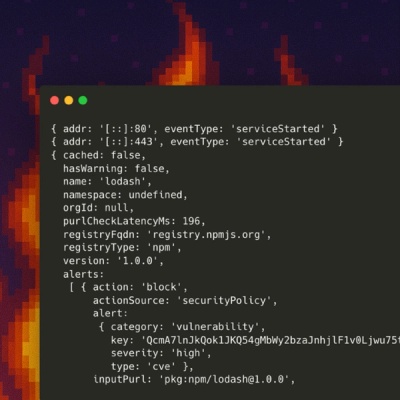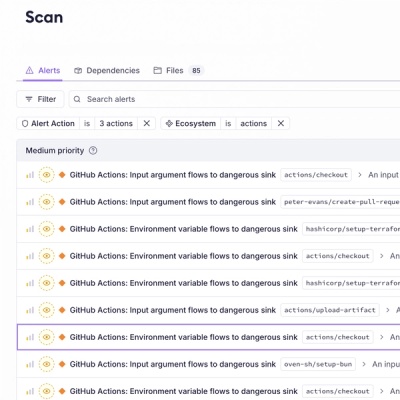
Product
Introducing Socket Firewall Enterprise: Flexible, Configurable Protection for Modern Package Ecosystems
Socket Firewall Enterprise is now available with flexible deployment, configurable policies, and expanded language support.
@push-rpc/next
Advanced tools
**Remote function**. A function that is implemented at the server side and can be called from the client side. Function can either be called synchronously or subscribed to. Subscribed function needs to be "triggered" at the server side to resend the data
Remote function. A function that is implemented at the server side and can be called from the client side. Function can either be called synchronously or subscribed to. Subscribed function needs to be "triggered" at the server side to resend the data to the subscribed clients. Sometimes remote function is called "item".
Remote function must return Promise and can accept any number of arguments. Note! Variables number of arguments is not supported (because optional argument is used for context and CallOptions). Remote function can throw an error, which will be propagated to the client.
Services. Services are used to group remote functions. Services object can be instances of classes or plain objects. Services can be nested.
Context. Only lives at the server side. Contains metadata about request and connection. It is passed to all the
middlewares and remote functions as the last parameter. For subscriptions, context is initially created during '
subscribe' invocation and copied to each 'trigger' invocation. Context, created by overriding createContext, should
contain only JSON data, to allow copying. Context can be modified in middlewares; these modification doesn't have to be
JSON-only.
Middlewares. Middlewares are used to intercept client and server requests. Both calls and subscriptions can be intercepted?. Middlewares can be attached on both client and server side. Middlewares receive context as the last arguments in the invocation. Middleware can modify context.
Throttling. Used to limit number of notifications from the remote functions. With throttling enabled, not all triggers will result in new notifications. Throttling can be used with reducers to aggregate values supplied in triggers.
FAQs
A TypeScript framework for organizing bidirectional typesafe client-server communication. Supports server-initiated data push (subscriptions). Uses HTTP, JSON and, optionally, WebSockets. Main focus is on simplicity and good developer experience.
We found that @push-rpc/next demonstrated a healthy version release cadence and project activity because the last version was released less than a year ago. It has 1 open source maintainer collaborating on the project.
Did you know?

Socket for GitHub automatically highlights issues in each pull request and monitors the health of all your open source dependencies. Discover the contents of your packages and block harmful activity before you install or update your dependencies.

Product
Socket Firewall Enterprise is now available with flexible deployment, configurable policies, and expanded language support.

Security News
Open source dashboard CNAPulse tracks CVE Numbering Authorities’ publishing activity, highlighting trends and transparency across the CVE ecosystem.

Product
Detect malware, unsafe data flows, and license issues in GitHub Actions with Socket’s new workflow scanning support.